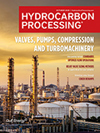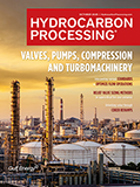Environment & Safety
Separating from the competition: Recovering profits after the pandemic
As recovery from the COVID-19 pandemic begins, so will a return to normal life.
Good distributor design for high-velocity feed debottlenecks a crude preflash tower
Bazan Group’s crude unit No. 3—not designed by any of the authors’ companies—was bottlenecked by the preflash tower.
Thick-wall reactor shell repair procedure after damage detection at an interface in a hydrocracking unit
The vessel and reactor operating in a refinery may undergo various deteriorations due to their operating conditions.
Ensuring safety in dynamic chemical manufacturing environments
As with all industries, chemical manufacturing is evolving in response to technical innovations, new customer requirements and increased global competition.
Executive Viewpoint: Technology to drive decarbonization of the oil and gas industry
<i>Hydrocarbon Processing</i> (HP) was pleased to speak with Thorbjoern Fors (TF), EVP of Industrial Applications, Siemens Energy, to discuss the decarbonization of the oil and gas industry and the technologies that are helping companies meet their sustainability goals.
Editorial Comment
Over the past several decades, the hydrocarbon processing industry has invested heavily in new processing units to produce low-sulfur and ultra-low-sulfur (ULS) transportation fuels.
Industry Perspectives
In the second half of 2021, Hydrocarbon Processing is hosting two events to showcase the leading technologies and people in the refining, petrochemicals and gas processing/LNG industries: The International Refining and Petrochemical Conference (IRPC) and the HP Awards. A “call for abstracts” has opened for both events.
Alarm management: A pillar of process safety management
The following describes how an adequate implementation of alarm management is a fundamental part in process safety management (PSM).
TOTAL refineries improve overhead systems corrosion and salting with amine-neutralizing technology
Weak organic amines are commonly used in crude unit overhead systems to prevent acidic corrosion from chlorides and other acidic contaminants via a neutralization reaction.
Determining the indeterminate
Standards such as API, ASME and NFPA are applied widely in the refining industry.

- Ducor Petrochemicals, Blue Circle Olefins partner to create a fully circular supply chain for polypropylene 11/18
- World's first: Air Liquide’s innovative technology converts ammonia into hydrogen at industrial scale 11/18
- Borouge to supply advanced polyolefin solutions for next-generation vehicles 11/18
- ASTM International signs MoU with Gulf Cooperation Council Laboratory Company for Technical Services (GCC Lab TSCo.) 11/18
- KBC launches Visual MESA Energy Management System 7.3 11/18
- MHI Compressor secures steam turbine contract at Baton Rouge (U.S.) olefins plant 11/18




